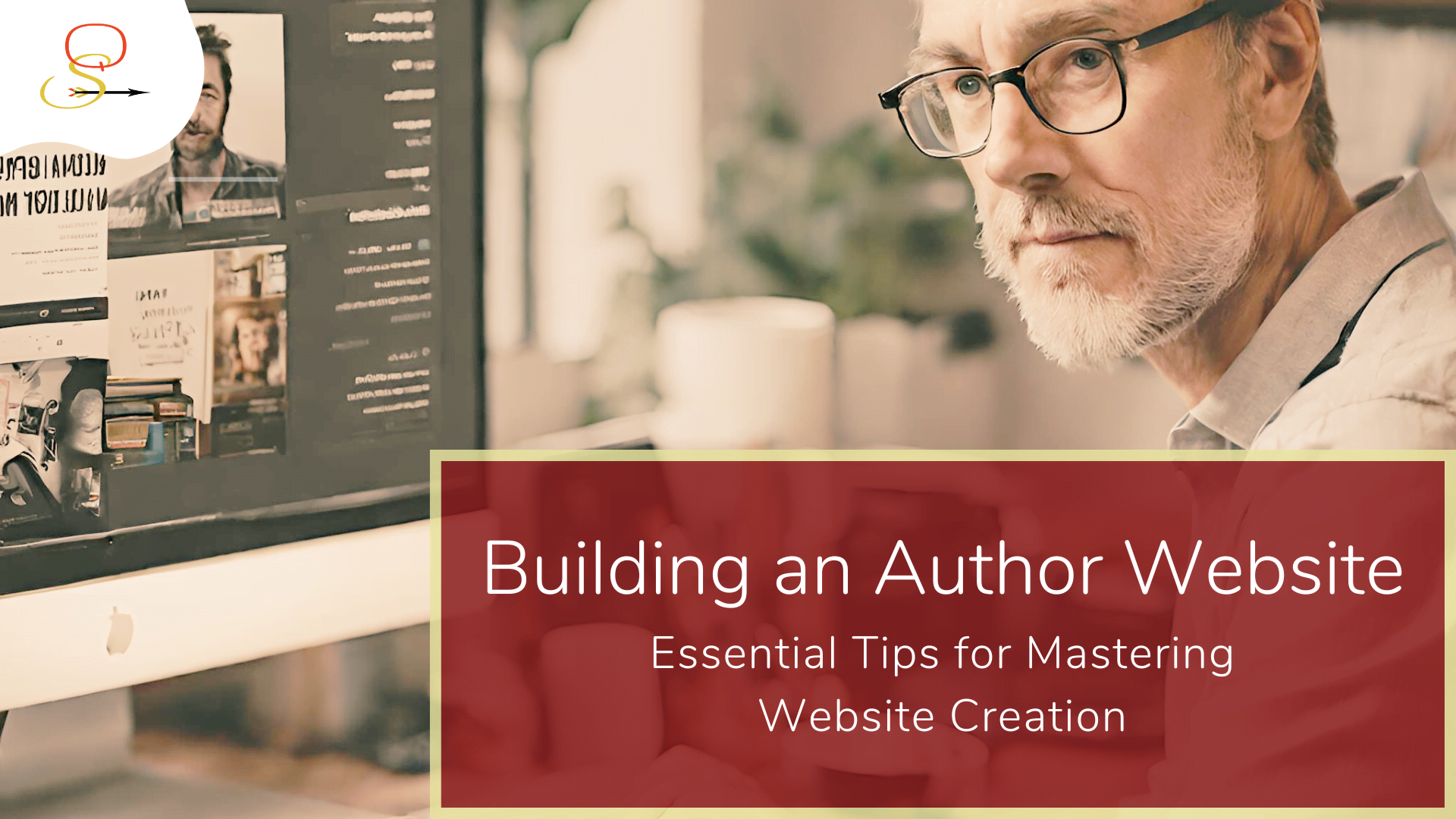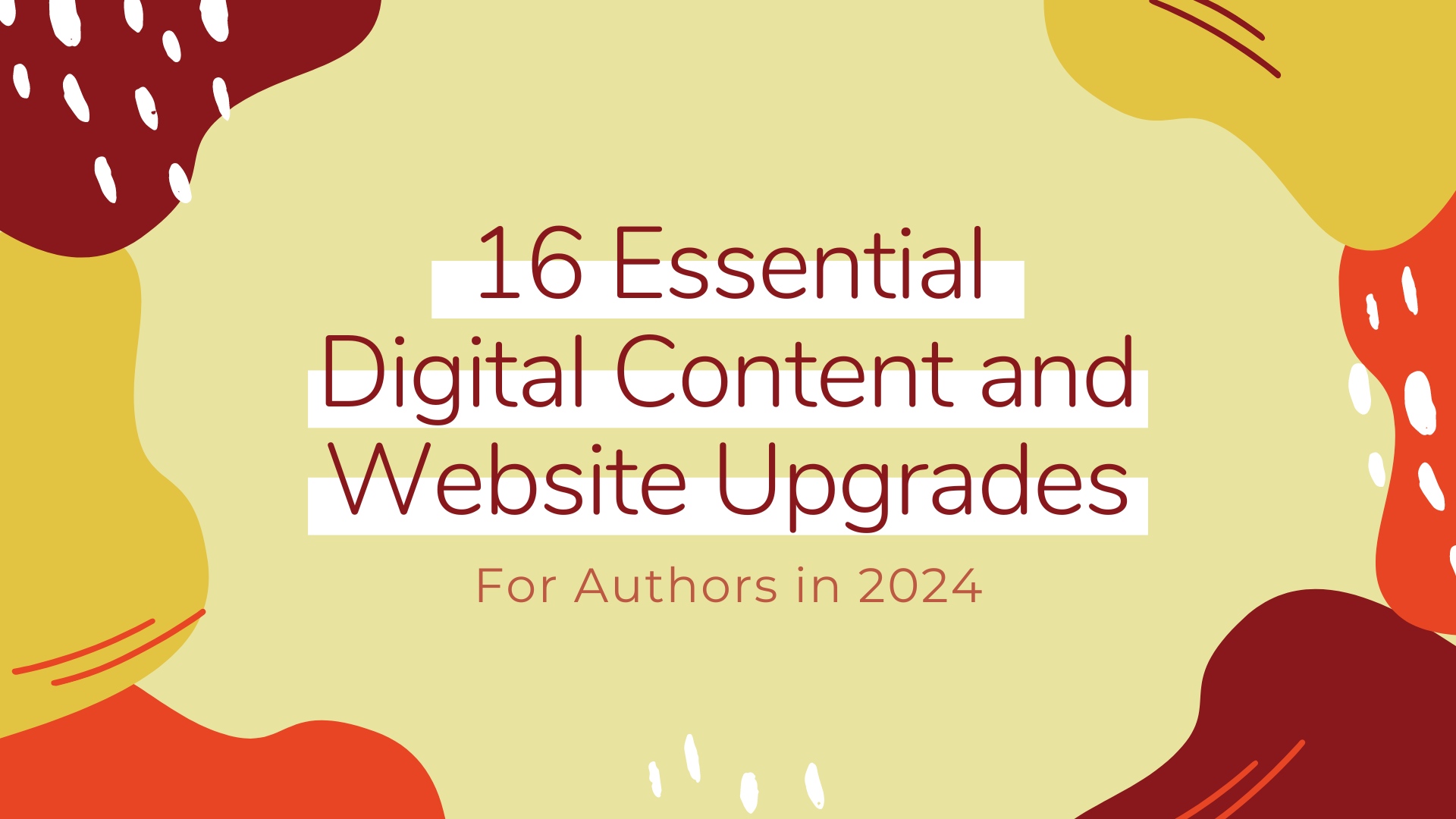Building an author website can seem like a daunting task, but with the right approach, it can be an exciting and rewarding journey. Whether you’re revamping an existing site or starting from scratch, the key to success lies in careful planning and strategic execution. In this article, originally published on SCBWI, we’ll explore a simple yet effective game plan that can dramatically enhance both your enjoyment and success in building a website.
Preparation Stage: Building an Author Website with the Right Mindset and Technical Groundwork
Mindset for Success

- Goal Setting: Establish what you want to achieve with building an author website. Is it primarily for book sales, reader engagement, or professional visibility?
- Audience Understanding: Know who you are building the site for. Tailor your content and design to meet the needs and expectations of your audience.
- Patience and Persistence: Accept that building a compelling website is a gradual process that might require time to perfect.
Technical Considerations
After setting your goals and understanding your audience, the next pivotal step is laying the technical groundwork. This involves selecting the right domain name, choosing a suitable web hosting service, and deciding on the most appropriate Content Management System (CMS) that fits your technical skill level and website objectives.
- Choosing a Domain Name: Pick a domain that is concise, memorable, and reflective of your brand. It should be easy to spell and pronounce to avoid confusion. After you create one you like, you need to purchase it. I prefer Namecheap as it’s super easy to use and the domains are…cheap, without sacrificing any quality or features.
- Selecting a Web Hosting Provider: Look for reliability, excellent customer support, scalability options, and competitive pricing. A good web host ensures your website remains accessible and fast. I prefer Cloudways as they have stellar customer service and features, can scale easily with you, and have multiple pricing options.
- Deciding on a Content Management System (CMS): Choose a CMS that is intuitive, supports customizations, and aligns with your site’s needs. Whether it’s WordPress, Squarespace, or another platform, ensure it supports a mobile-responsive design and has strong SEO capabilities. That said, I’m a huge proponent of WordPress.org because of the flexibility in design, features, and scalability it offers without the hefty price tag most other CMSs have.
- Pre-launch Content Collection: Gather all necessary content—biographies, book summaries, cover images, and contact information beforehand. This preparedness streamlines the design process and ensures consistency across your website. Need a checklist to help you organize? Grab a free Quill Shift Author Website Checklist here!
Setting a solid foundation in both mindset and technical aspects significantly smoothens the subsequent stages of building and launching an author website. This preparation not only aids in creating a functional and aesthetically pleasing website but also ensures it resonates well with your intended audience.
Execution Stage: Key Steps in Building an Author Website
Design and Development
Once the foundational planning is complete, the next phase is the actual construction of your author website. This stage involves both design and development elements that will define the user experience and functionality of your site.
- Website Layout and Design: Create a visually appealing and easy-to-navigate layout. Consider your brand colors, fonts, and visual elements that reflect your authorial style. The design should be clean and uncluttered, focusing on user experience and ease of navigation.
- Content Implementation: Populate your website with the pre-gathered content. Ensure each piece, from biographies to book summaries, is optimally placed to catch the reader’s attention and provide value.
- Responsive Design: Ensure that the website is responsive (the content adjusts depending on the screen size used to view it) and provides a seamless experience on all devices, particularly mobiles and tablets, as these platforms are increasingly used by readers to access content.
Search Engine Optimization (SEO)

- Keyword Integration: Incorporate relevant keywords naturally into your content, titles, picture labels, and meta descriptions to improve your website’s visibility in search results.
- SEO Best Practices: Implement SEO best practices such as optimizing load times, ensuring all images have alt texts, and maintaining a sitemap to help search engines better index your site.
Security Measures
Protecting your website from security threats is essential to safeguard your content and your visitors’ data.
- SSL Certificate: Install an SSL certificate to encrypt data between your server and your visitors’ browsers, essential for protecting sensitive information.
- Regular Updates: Keep your CMS and plugins up to date to protect against vulnerabilities. Regular updates often fix security holes that could be exploited by attackers.
- Backup Solutions: Regularly back up your website’s data to ensure that you can quickly restore it in case of data loss or a cyber attack.
Testing and Launch
Before officially launching your website, testing is necessary to ensure that all elements function as intended and provide a good user experience.
- Functionality Testing: Test all functions of the website, including forms, buttons, and third-party integrations to ensure they work correctly.
- User Experience Testing: Once you’ve finished poking and prodding your site, ask your family and friends to give you feedback on how easy the website is to use and navigate. The, make adjustments based on their thoughts.
- Launch: Once testing is complete and all adjustments are made, prepare for the launch. Plan a launch date and consider a soft launch with a select audience to gather initial feedback, like a past email list of readers or your writers group.
Post-Launch: Maintaining and Growing Your Website
Ongoing Engagement and Content Updates
After your author website is live, the journey doesn’t end—it evolves. Keeping your website dynamic and engaging is crucial for attracting and retaining visitors. Regularly update your site with fresh content, such as blog posts, new book announcements, or upcoming events. This not only keeps your audience informed but also improves your SEO rankings by showing search engines that your website is active.
- Engage with Your Audience: Respond to comments, participate in discussions, and create interactive content to build a community around your website. Engagement can turn casual visitors into loyal fans.
- Content Calendar: Develop a content calendar to plan and schedule regular updates. This helps in maintaining a consistent presence and keeps your audience looking forward to new content.
 Hot Tip: Don’t know what to write about? That’s okay! That’s where AI can come in handy.
Hot Tip: Don’t know what to write about? That’s okay! That’s where AI can come in handy.
Many writers have funny feelings about AI, but the thing is, AI isn’t going anywhere and no one is suggesting you use AI to copy or plagiarize but to help with idea generation and your own content repurposing so you can focus on the important work of writing your books.
What does this look like? Using AI tools like Olympia to help you come up with blog ideas, newsletter ideas, and social media post ideas based on your genre, your book topics, and your readers’ interests.
Then, based on holidays and occasions going on in the world, connecting those topics to things already happening to make them even more relevant. Ask AI to make a post calendar by month based on how often you want to write your blog posts, newsletters, or post on social media based on the ideas. Then, you write them. The hard part about what to write and when to write is out of the way.
AI helps you generate and organize your ideas, then you get to be the creative, make the magic, and further engage with your readers.
 Technical Maintenance and Security
Technical Maintenance and Security

- Regular Updates: Keep your CMS, themes, and plugins updated to the latest versions. Updates often include security patches and new features that enhance website performance.
- Site Backups: Implement regular backup protocols to protect your data. Automatic backup solutions can ensure that you always have a recent copy of your site in case of a malfunction or cyberattack.
- Monitor Performance: Use tools to monitor your website’s performance and uptime. Quick responses to performance issues can prevent potential losses in visitor engagement.
Analyzing and Adapting
To continuously improve your website, regularly analyze its performance using web analytics tools. These tools can provide insights into visitor behavior, traffic sources, and more, helping you make informed decisions about future content and design changes.
- SEO Monitoring: Regularly check your website’s SEO performance and adjust your strategies based on current trends and analytics. This includes updating keywords, optimizing meta descriptions, and improving content readability.
- Feedback and Surveys: Gather feedback from your audience through surveys or feedback forms. This direct input can be invaluable in understanding what works and what doesn’t on your site.
Successfully building an author website is a multifaceted endeavor that extends far beyond its initial launch.
From the meticulous planning in the preparation stage (don’t forget to snag your author website checklist) to the strategic execution and ongoing maintenance, each phase plays a critical role in crafting a website that not only meets your specific goals but also deeply resonates with your audience.
Embrace the journey of continuous improvement and interaction, leveraging the power of your online presence to connect with readers and expand your professional reach. By staying engaged, regularly updating your content, and keeping abreast of technological advancements, your website will not only survive but thrive in the digital landscape, reflecting your growth and success as an author.
P.S. Some of the links contained in this article may be affiliate links. This means that I may receive a commission if you click on the link and make a purchase from the affiliate at no cost to you. I only recommend products and services that I know or trust to be of high quality, whether an affiliate relationship is in place or not.








0 Comments